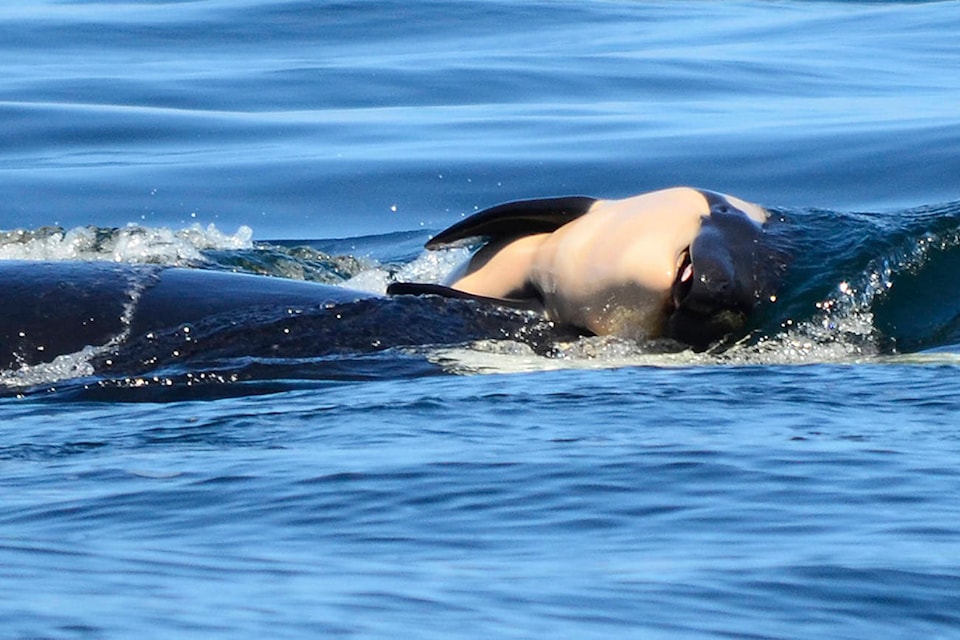A southern resident orca known for carrying her dead calf for nearly three weeks is pregnant again, say researchers.
In 2018, orca J35 or Tahlequah’s ‘tour of grief’ captured global attention as a visceral representation of the endangered southern resident population, of which only 73 whales are estimated to remain.
Aerial images captured earlier this month by scientists from SR3 (Sealife Response, Rehabilitation and Research) identified pregnant orcas in all three southern resident pods (J, K and L), but the organization says this doesn’t necessarily mean there will be a baby boom for the dwindling orca pods.
READ ALSO: Orca’s ‘tour of grief’ over after carrying dead calf around for nearly 3 weeks
“This is not unusual,” says a press release from SR3. “And unfortunately the majority of recent pregnancies have not resulted in successful births.”
| Known for carrying her dead calf for 17 days in 2018, southern resident orca J35 or Tahlequah, is pregantn again. (SR3 SeaLife Response, Rehab and Research and NOAA’s Southwest Fisheries Science Center in 2019 and SR3 and Southall Environmental Associates in 2020; both collected under NMFS research permit 19091) |
Reproduction failures are typically linked to malnutrition caused by shrinking salmon numbers, SR3 notes. Pregnancy in killer whales lasts up to 18 months.
“We hope folks on the water can give the southern residents plenty of space to forage at this important time. With such a small population … every successful birth is hugely important for recovery.”
In 2019, the Canadian government implemented a mandate for boats in the Salish Sea to maintain a 400-metre distance from orcas in an effort to lessen the effects of disturbance and underwater noise pollution. In 2020, foraging and extended sanctuary zones were implemented, including an area based fishery closure for critical habitat areas in the Strait of Juan de Fuca and near the Gulf Islands.
The Department of Fisheries and Oceans asks boaters to slow down below seven knots or less and stop fishing within 1,000 kilometres of orcas. Those on the water can also help by turning off echo sounders and fish finders when they are not in use.
READ ALSO: Three southern resident killer whales declared dead plunging population to 73
Do you have something to add to this story, or something else we should report on? Email:nina.grossman@blackpress.ca. Follow us on Instagram. Like us on Facebook and follow us on Twitter.
